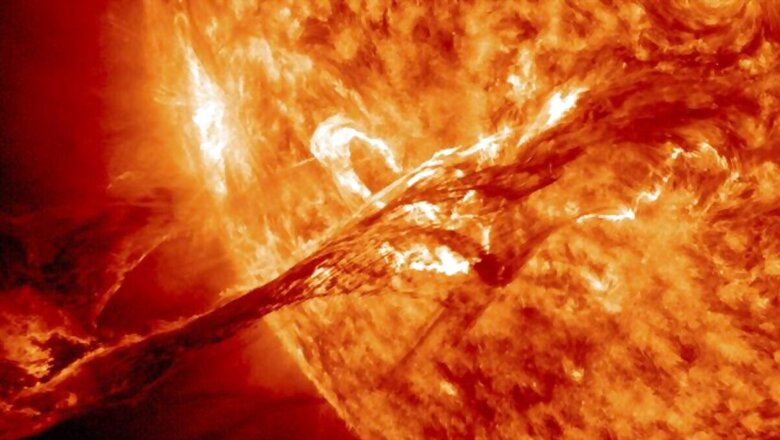
views
A current 24-hour day on Earth might look like a 60-hour day were it not for solar-driven atmospheric tidal waves that for over a billion years, kept the moon’s effect of slowing down Earth’s rotation in check, astrophysicists have revealed. These tides induced in the Earth’s atmosphere by the Sun’s gravity tend to speed up Earth’s rotation, countering the slowing down effect produced by tides in the Earth’s oceans caused by the moon’s gravitational pull.
From approximately two billion years ago until 600 million years ago, these solar-driven tides had kept the Earth’s rotational speed steady and the day’s length at a constant 19.5 hours, the researchers at the University of Toronto, Canada, said.
The moon’s gravitational pull continues to slow down our planet’s rotation since it was first formed some 4.5 billion years ago, slowly and steadily lengthening an Earth day’s duration, which was less than 10 hours at the time the moon formed.
Today, it lengthens at an imperceptible rate of some 1.7 milliseconds every century. For a larger part of the Earth’s geological history, said to be about 4.5 billion years, the lunar tides have overpowered the solar tides by about ten times, resulting in slowing down rotation and extending days.
However, some two billion years ago, the solar tides were larger because the atmosphere was warmer and the time taken by them to travel the world, or their natural frequency, matched the length of the day, the researchers said in their study published in the journal Science Advances, drawing on geological evidence and using atmospheric research tools.
The atmosphere is known to resonate or vibrate at a frequency, its natural frequency, determined by various factors, including temperature. That is, the solar tidal waves travel through it at a velocity determined by its temperature.
Again, for the larger part of the Earth’s history, these tidal waves had been out-of-sync with the planet’s rotational rate, creating smaller solar tides.
But during the billion-year period under study, starting two billion years ago, the tidal waves travelled around the world with a period of about 10 hours. Also at this time, Earth’s day length, extended by the moon’s pull, had become 20 hours.
When the atmosphere’s natural frequency and the Earth’s day length became even factors – 10 and 20 – the solar tides were reinforced and the Sun’s gravitational pull was strengthened, enough to counter the moon’s gravitational pull and, in turn, the lunar tides. The researchers also believe that rising temperatures due to global warming could move the atmosphere away from resonance, weakening solar tides relative to lunar tides, thereby resulting in longer Earth days.



















Comments
0 comment